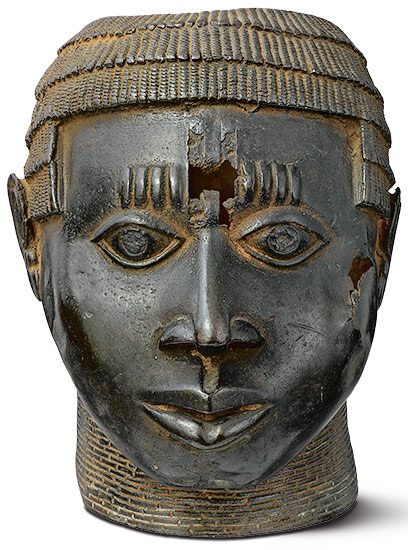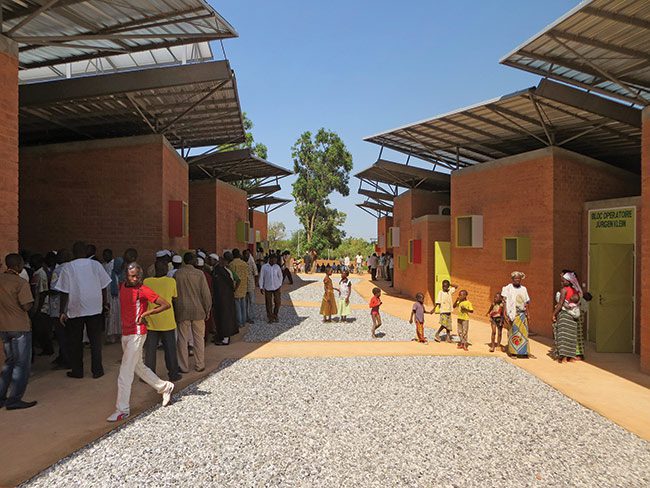Philadelphia Museum of Art, United States
14 May 2016 - 04 Dec 2016

Statue, c. 1520–80 Edo culture, Benin kingdom, Nigeria Penn Museum, Philadelphia. courtesy of the Penn Museum. Photograph by G. Ombler
This spring the Philadelphia Museum of Art is presenting five exhibitions and a series of related programs that feature a broad spectrum of the arts from across the African continent.
These exhibitions will include historical works of art as well as contemporary fashion, photography, design, and architecture. The centerpiece is ‘Look Again: Contemporary Perspectives on African Art’, a major exhibition drawn from the collection of the Penn Museum. It examines the rich artistic heritage of West and Central Africa, and is designed to acquaint visitors with the diverse styles and functions of African art through the act of close looking.
‘Look Again’ takes advantage of some of the greatest strengths of the Penn Museum’s collection, placing a strong emphasis on process, materials, and ornamentation as well as the understanding that can be gained through an examination of context, function, and provenance. Highlights from the kingdom of Benin include carved ivories and bronzes, among them plaques that once adorned the Oba’s palace, a magnificent architectural complex at the heart of Benin City in present-day Nigeria. Bronzes created as early as the 16th century include commemorative heads, ranging from the very simple to the extremely ornate, that would have been placed on altars.
Many of the works on view are sculptures from Central Africa, including power figures created to strengthen, protect, or heal their users. These works can range in size from small handheld objects to figures of imposing scale. In some cases, nails and blades were inserted into these figures as part of their ritual use. Wooden sculptures originating from West, Central, and South Africa present a wide array of poses and expressions, and some incorporate the figure into functional objects, such as headrests or tools.
Art from the Kuba culture (from the present-day Democratic Republic of the Congo) will include cloth, made from dyed raffia and other natural fibers showing bold and lively geometric designs, along with carved wooden cups, bowls, and boxes adorned with patterns. The exhibition also features brass weights from present-day Ghana that were used by the Akan peoples to weigh gold. Made through lost-wax casting, they are miniature sculptures of people, animals, objects, and abstract patterns that reflect motifs and proverbs from West Africa.
The exhibition closes with a display of Kota reliquary figures, from present-day Gabon and Republic of the Congo, which were made to protect bundles of ancestral relics and are distinguished by exquisite applied metalwork. Through the use of an interactive digital program jointly developed by the Pulitzer Arts Foundation, Rampant Interactive, and Frederic Cloth, visitors can further explore the individual qualities and intriguing stylistic associations of these works.
‘Look Again’ is curated by Dr. Kristina Van Dyke, curator of African art, and former Director of the Pulitzer Foundation.
Creative Africa Season
The four other exhibitions of the Creative Africa season focus mainly on modern and contemporary African art and design or offer a dialogue between past and present, tradition and innovation, and local and global concerns. Each calls attention to the continuities and differences between African art forms over the centuries.
‘Three Photographers/Six Cities’ (April 30–September 25, 2016) presents work by artists—Akinbode Akinbiyi (Nigerian, born 1946), Seydou Camara (Mali, born 1983), and Ananias Léki Dago (Ivorian, born 1970)—who document contemporary life in some of Africa’s growing urban centers. The photographs in the exhibition were made in Bamako, Cairo, Johannesburg, Lagos, Nairobi, and Tombouctou (Timbuktu) and offer an in-depth look at the work of each of these artists. Akinbiyi and Léki travel extensively throughout Africa and take months and even years to craft photographic series about the cities on which they focus their attention. Camara photographed manuscripts in Tombouctou from 2009 until 2013, documenting fragile Islamic texts as well as efforts to conserve and transcribe them.
‘Vlisco: African Fashion on a Global Stage’ (April 30, 2016–January 22, 2017) explores this celebrated company’s most enduring designs, examines the process of creating a new textile, and showcases a selection of contemporary fashions by African and European makers as well as Vlisco’s in-house design team. Known for its bold and colorful patterns, Vlisco creates fabrics that marry tradition with luxury and have long been synonymous with African fashion.

Surgical Clinic and Health Center, Léo, Burkina Faso, completed 2014, Designed by Francis Kéré, courtesy of Kéré Architecture
‘The Architecture of Francis Kéré: Building for Community’ (May 14–September 25, 2016) features a site-specific, immersive environment designed by this world-renowned Burkina-Faso-born architect. Kéré is best known for work that emphasizes the collaborative and collective nature of building, responding to local cultures, knowledge, materials, and technologies. Kéré’s Berlin-based firm has received growing international attention and acclaim for its community-focused, contextually sensitive work. The installation invites visitors to interact with the environment and reflect on the relationship between architecture and the Philadelphia community.
‘Threads of Tradition’ (April 30, 2016–January 2017) focuses on the traditional patterns in West and Central African textiles and the techniques used to create them, including strip weaving, resist dyeing, piecing, appliqué, and embroidery. The works are drawn primarily from the collection of the Philadelphia Museum of Art, with additional loans from the Penn Museum.